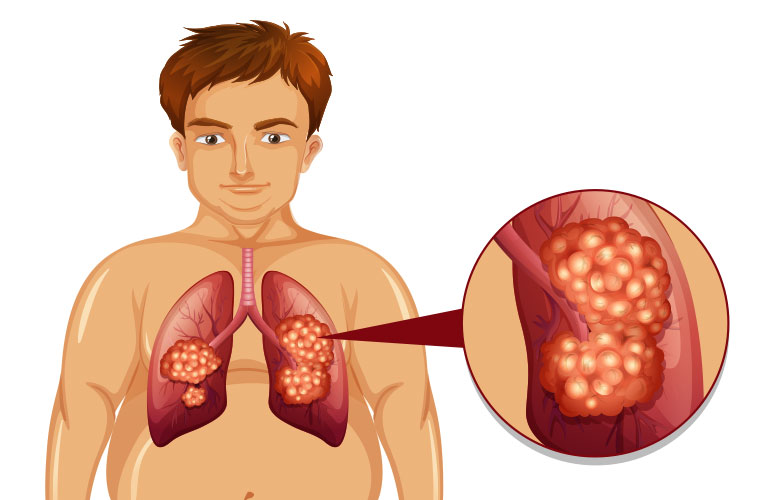- Home
- Departments
Departments Of Interstitial Lung Disease
Interstitial-Lung-DiseaseInterstitial lung disease (ILD) refers to a group of disorders characterized by inflammation and scarring (fibrosis) of the lung tissue, specifically the interstitium, which is the space between the air sacs (alveoli) in the lungs. ILD encompasses a wide range of conditions that can affect the interstitium, leading to impaired lung function and symptoms such as shortness of breath, cough, and fatigue.
Causes and Types of Interstitial Lung Disease:
ILD can be caused by various factors, including autoimmune diseases, environmental exposures, occupational hazards, infections, medications, and genetic factors.
Some common types of ILD include:
Idiopathic Pulmonary Fibrosis (IPF): IPF is the most common and well-known form of ILD. It is characterized by progressive scarring of the lung tissue, which leads to stiffening of the lungs and impaired gas exchange. The cause of IPF is unknown, although it is thought to involve a combination of genetic predisposition and environmental factors.
Connective Tissue Disease-Associated ILD: ILD can occur as a complication of certain autoimmune diseases, such as rheumatoid arthritis, systemic sclerosis (scleroderma), dermatomyositis, and polymyositis. In these cases, the immune system attacks the lungs, leading to inflammation and fibrosis.
Hypersensitivity Pneumonitis: Hypersensitivity pneumonitis is an inflammatory lung disease caused by exposure to environmental allergens or irritants, such as mold, bird droppings, or occupational dusts. It typically presents with symptoms of cough, shortness of breath, and flu-like symptoms.
Occupational Lung Diseases: Exposure to certain occupational hazards, such as asbestos, silica, coal dust, or beryllium, can cause ILD. These conditions are often referred to as pneumoconioses and can lead to progressive scarring of the lungs.
Symptoms of Interstitial Lung Disease:
The symptoms of ILD can vary depending on the underlying cause and severity of the disease but may include:
- Shortness of breath, especially with exertion
- Chronic dry cough
- Fatigue
- Chest pain or tightness
- Unintentional weight loss
- Clubbing of the fingers or toes (in advanced cases)
Diagnosis and Treatment of Interstitial Lung Disease:
Diagnosis of ILD typically involves a combination of medical history, physical examination, imaging studies (such as chest X-ray or high-resolution CT scan), pulmonary function tests, and sometimes lung biopsy to confirm the presence of interstitial fibrosis.
Treatment of ILD aims to slow the progression of the disease, relieve symptoms, and improve quality of life. Depending on the underlying cause and severity of the disease, treatment may include:
Medications: Corticosteroids, immunosuppressive drugs, and antifibrotic agents may be prescribed to reduce inflammation and fibrosis in the lungs.
Oxygen Therapy: Supplemental oxygen therapy may be necessary to improve oxygenation and relieve symptoms of breathlessness.
Pulmonary Rehabilitation: Pulmonary rehabilitation programs, which include exercise training, education, and support, can help improve exercise tolerance and quality of life in individuals with ILD.
Lung Transplantation: In severe cases of ILD where other treatments have been ineffective, lung transplantation may be considered as a last resort option.
Overall, ILD is a complex and heterogeneous group of disorders that can have significant implications for lung function and quality of life. Early diagnosis and comprehensive management are essential for optimizing outcomes and minimizing disease progression.

